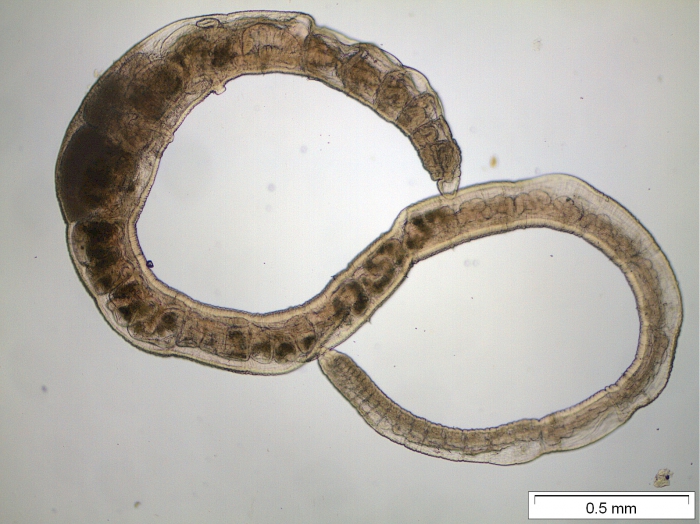
Tubificoides brownae
Annelids-Oligochaetes
Tubificoides brownae is a marine oligochaete, described from New Jersey. Marine oligochaetes resemble terrestrial earthworms, but are usually less than 60-70 mm long. The type specimen had 38 segments, and was 20 mm long. This worm has been found from Texas and Puerto Rico to Cape Cod, and the Northeast Atlantic, in the British North Sea. It is presumed native to the North Atlantic. In the Northeast Pacific, it has been collected from Mexico to British Columbia, including Southern California harbors, San Francisco Bay, Coos Bay, and the Fraser River estuary. It is presumed to be introduced to the West Coast. Possible vectors include solid ballast, ballast water, or plantings of Eastern Oysters. Oligochaetes lack parapodia, and have relatively short setae. They are hermaphroditic, with a few anterior segments modified to form a reproductive section, called the clitellum. At sexual maturity, they have a few modified segments forming a reproductive section, called a clitellum. The worms copulate, and lay fertilized eggs in cocoons. Marine oligochaetes usually occur in silty or muddy sediments, and are deposit feeders.